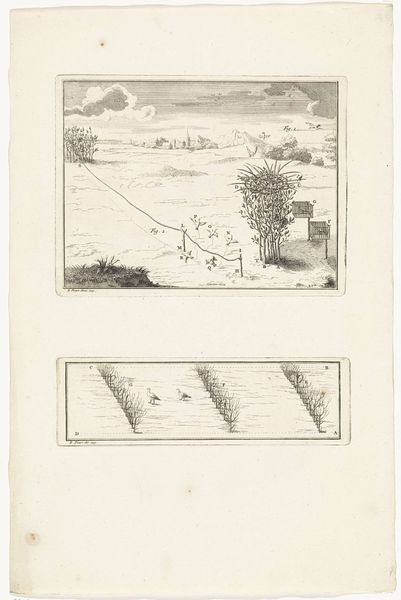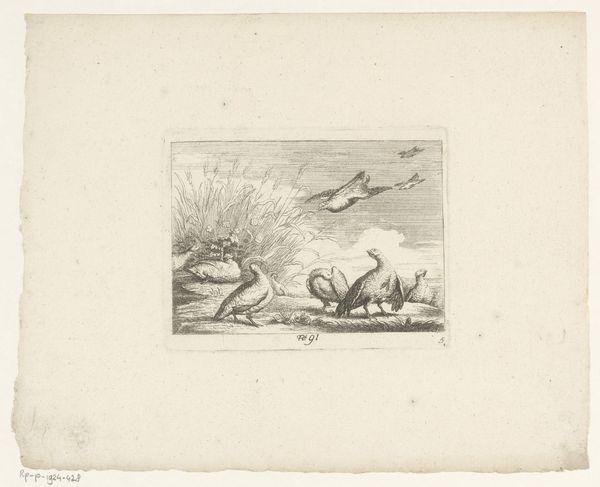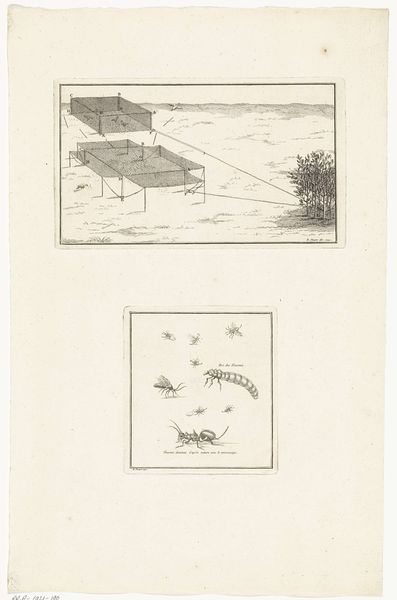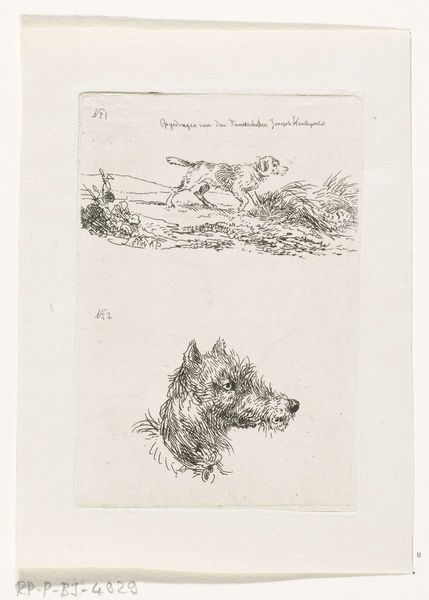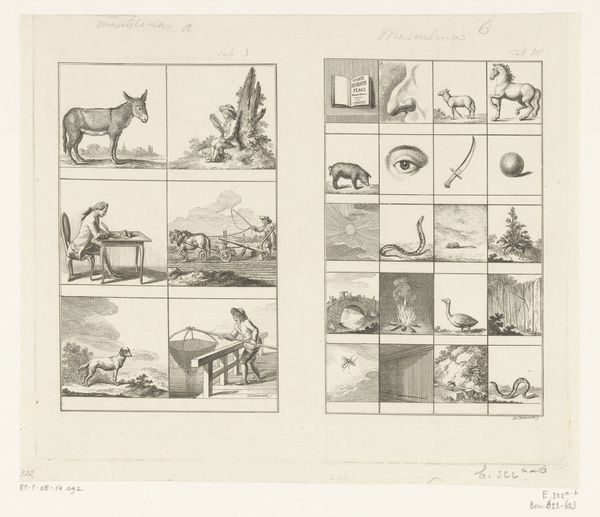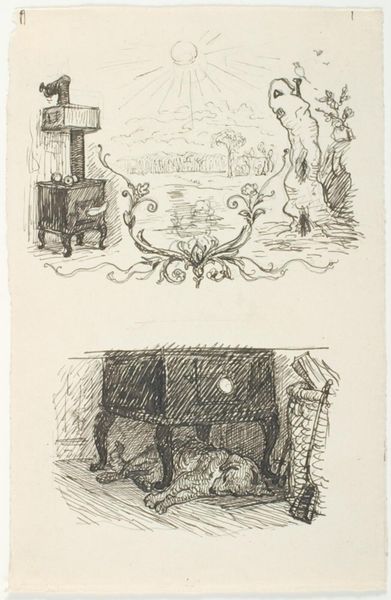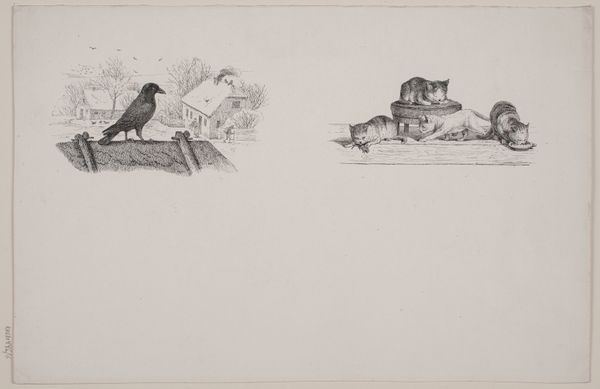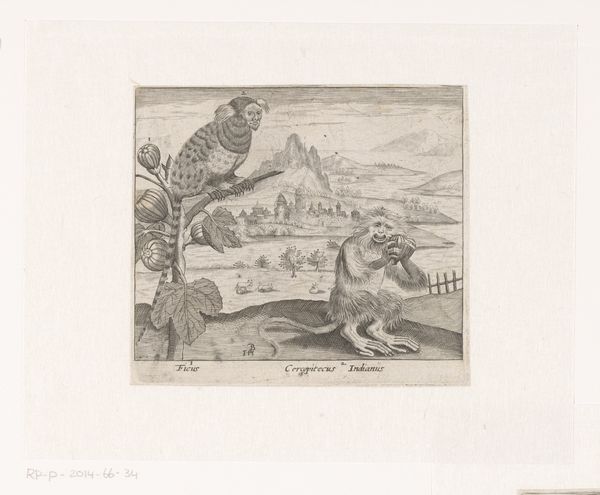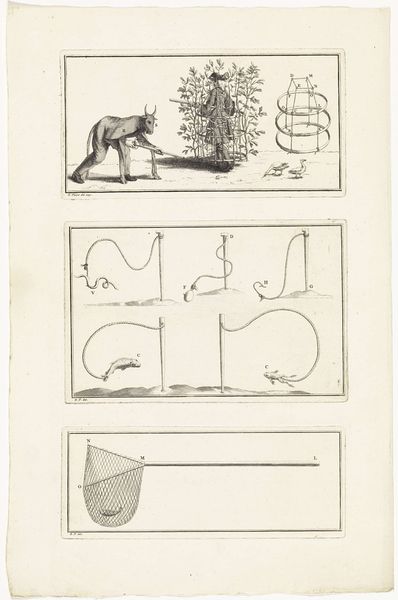
drawing, print, etching, ink, engraving
#
drawing
#
comic strip sketch
#
quirky sketch
#
baroque
#
animal
# print
#
etching
#
landscape
#
personal sketchbook
#
ink
#
idea generation sketch
#
sketchwork
#
ink drawing experimentation
#
pen-ink sketch
#
sketchbook drawing
#
genre-painting
#
storyboard and sketchbook work
#
sketchbook art
#
engraving
Dimensions: height 78 mm, width 188 mm, height 138 mm, width 188 mm, height 381 mm, width 250 mm
Copyright: Rijks Museum: Open Domain
Editor: This is "Eekhoorns, marter en vogelfuik" – Squirrels, Marten and Bird Trap – made around 1730 by Bernard Picart. It’s an etching, isn’t it? What I find fascinating is the combination of a natural scene with what appears to be an almost technical diagram of some kind of trap. What do you make of that juxtaposition? Curator: That contrast is key. As a historian, I see this as reflecting a shift in how people viewed and interacted with nature in the 18th century. We're moving from a more symbolic understanding to a more scientific, almost engineering-based approach. Notice how the animals are rendered quite realistically in the upper scene, while the trap below is presented with an analytical, almost detached precision. Do you see the effect? Editor: Yes, it’s like two different worlds colliding. So, is the placement deliberate? Is the idyllic view being ‘trapped’ by the diagram beneath? Curator: Exactly! Picart is commenting on how humanity is starting to dissect and control nature. The print, likely part of a larger series, can be seen as an early form of visual commentary on the relationship between mankind and nature, shaped by the rise of scientific thinking and industrializing practices. Editor: So it’s not just a random drawing but a critique of its time! I would never have guessed it could be read as something critical. Curator: Often these seemingly simple images were packed with socio-political observations, functioning as silent yet powerful voices in an era with restricted freedom of expression. Prints allowed for wider circulation of ideas, engaging a broader public in discussions around these topics. It's a fascinating insight into the cultural anxieties of the period. Editor: It definitely gives me a whole new perspective on 18th-century art. It’s really interesting to consider the social commentary hidden within what I would’ve considered just a landscape sketch.
Comments
No comments
Be the first to comment and join the conversation on the ultimate creative platform.
